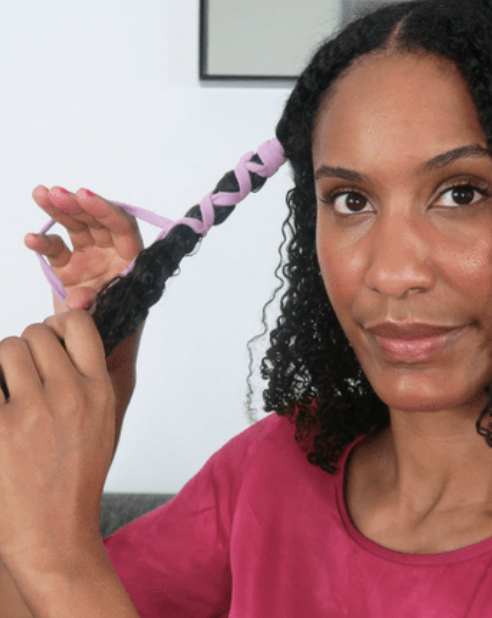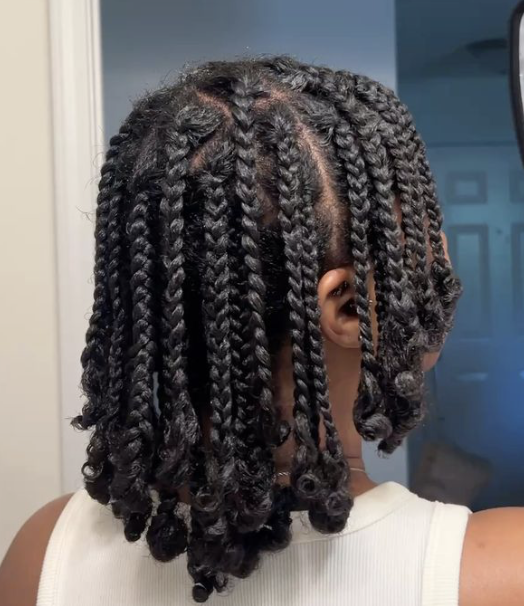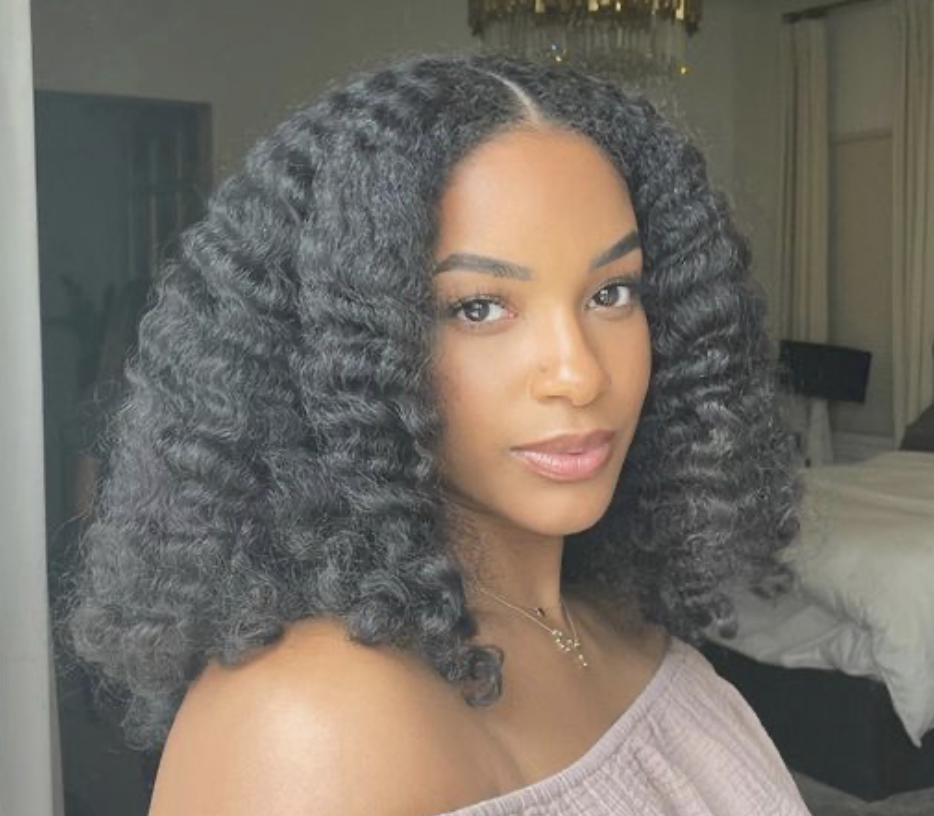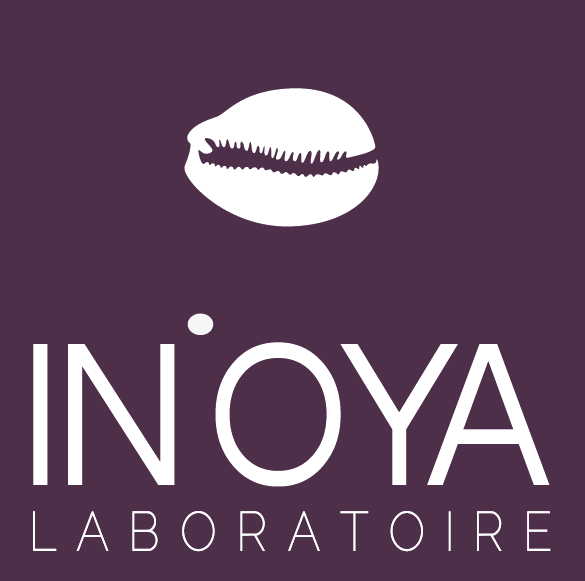Curly and Coily Hair: How to Smooth It Naturally Without Breakage (The Real, Effective Techniques)
Textured hair is beautiful, whether wavy, curly, or coily. It offers endless styling possibilities to create different looks. However, it also requires a lot of daily care.
Although we encourage keeping your hair natural and avoiding chemical relaxers or texturizers, it’s totally understandable to sometimes want to switch up your style, see your length, or simply wear your hair straight—without damaging it.
In this article, we’ll explore different techniques to straighten your hair naturally or with gentle heat, without compromising its health or beauty!
Step 1: Preparing Your Hair
As is often the case, preparation is the key step. Before straightening your hair, it’s essential to prepare it properly in order to achieve the best results. Curly and coily hair is fragile and can easily break if it isn’t well hydrated and protected.
The first step is to carry out an oil treatment to deeply nourish the hair. Start by dividing your hair into several sections according to its density. The idea is to work in sections small enough to avoid stressing the hair and to minimize breakage. Lightly dampen your hair, then apply a nourishing oil (olive, coconut, castor, sweet almond, or avocado) to your lengths.
First detangle your hair with your fingers to loosen knots and reduce breakage, then use a wide-tooth comb, working from roots to ends. Next, cover your hair with a heating cap, hooded dryer, or simply a warm towel. Leave it on for at least 30 minutes—the longer you leave it, the deeper the hydration.
Once the oil treatment is done, it’s time to shampoo. Choose a hydrating shampoo to nourish your hair and prevent breakage. This step is important not only to prepare for straightening but also for daily care: remember, the key to long, healthy hair is hydration. Water and hydrating products soften the hair shaft, making it less prone to breakage both daily and during straightening.
Next comes hydration. Apply a moisturizing leave-in conditioner to damp hair to lock in moisture. Many brands offer leave-ins specifically designed to prep hair for straightening and naturally loosen the curl. Choose a smoothing, anti-frizz formula that keeps the hair moisturized.
If you plan to blow-dry or flat-iron your hair, also apply a heat protectant serum or spray. Then detangle your hair again section by section and create twists. Allow your hair to air-dry completely. Once dry, you can move on to the different natural straightening techniques.
And Be Careful With Your Skin!
We rarely think about it, but haircare products (oil treatments, masks, leave-ins) can also affect your facial skin. When oils or products accumulate on the forehead, temples, or hairline, they can clog pores and cause small breakouts: pimples, blackheads, or localized irritation. These imperfections—often concentrated around the hairline—can sometimes leave dark spots, especially on Black, brown, or mixed skin.
To avoid this, adopt a few simple habits. During your oil or mask treatments, wear an absorbent headband or a thin towel around your forehead so the products don’t run onto your face. Once your hair treatment is done, cleanse your skin thoroughly with a gentle cleanser to remove any oil or product residue that can clog pores. Then apply a lightweight, non-comedogenic moisturizer to soothe and rebalance the skin. Finally, avoid touching your forehead or temples after applying oils to your hair—greasy hands can transfer product onto your skin and trigger breakouts. Good hygiene (clean hands, regularly changed pillowcases, clean brushes/combs) is also essential to keeping your skin clear, even when using rich, nourishing haircare products.
Step 2: Heat-Free Hair-Stretching Techniques
If you want to straighten your hair without a flat iron, several natural methods are highly effective. The key to all these techniques is stretching with a comb (hair stretching). This involves gently combing the hair section by section after deep hydration. It helps elongate curls without heat, reveal the real length, and maintain a smoother appearance using the techniques below. Keep in mind: the longer you leave these methods in place, the better the results. We recommend doing them before bed so they can work overnight.
1. Banding (the Elastic Method)
Banding is an ancestral technique widely used in Afro haircare routines to stretch and smooth coily hair without heat.
It’s ideal for anyone wanting to straighten their hair naturally while preserving the hair’s health. Start with clean, slightly damp hair—ideally after your routine (mask, leave-in, moisturizer). Carefully detangle each section with a wide-tooth comb or your fingers to avoid breakage. Apply a lightweight oil (grape seed, jojoba, almond…) or a light moisturizing cream to nourish the hair and prevent dryness. Divide your hair into several sections depending on thickness, then wrap each section with small metal-free elastics from roots to ends, spacing each elastic about 1 cm apart. Let your hair air-dry for a few hours or overnight under a satin bonnet or scarf. The next day, your hair will be visibly more stretched and less voluminous. This is an excellent method for preserving length because it reduces shrinkage.
The closer and tighter the elastics, the smoother the hair will look—but be careful: if they’re too tight, they can weaken the roots and cause breakage.

2. Twists or Braids (Twist-Out or Braid-Out)
The twist-out or braid-out technique is perfect if you want to loosen your curls while maintaining a natural look and movement.
This gentle method reduces volume, softens texture, and gives a smoother finish. Start on slightly damp hair (after a leave-in or cream) to soften and shape the hair. Separate the hair into sections and make either braids or twists.
Twists create softer, wavier, more voluminous curls with less definition—ideal for a natural, airy look.
Braids create more structured curls with smoother roots and a more stretched effect—perfect for a sleeker result.
Let your hair dry completely overnight or under a low-heat bonnet dryer for faster results. Once dry, gently undo the twists or braids and separate the strands with your fingers (not a comb) to maintain definition and stretch. The result: soft, shiny, lightly wavy hair with a naturally smooth effect.
The finer the twists or braids, the smoother and more disciplined the finish. Thicker ones give a wavy, voluminous look.


3. Wrapping (Doobie Method)
Inspired by Afro-Caribbean routines, the wrapping method is one of the most effective techniques for aligned, shiny, smooth hair. It’s often used after a gentle blow-dry or banding to extend the smoothing effect while keeping the hair supple.
Start with clean, hydrated, well-detangled hair. Apply a serum, leave-in, or moisturizer to keep the hair soft. With a fine-tooth comb, wrap your hair around your head, section by section, smoothing it flat against the scalp. Secure with flat clips (or hair wrapping tape). Cover your head with a satin scarf or bonnet and leave it on for several hours or overnight. You’ll end up with smooth, shiny, straightened hair with a natural “fresh blowout” finish.
3. Straightening With Heat
If you want a more defined, sleek, longer-lasting straightening result, you can absolutely use heat—as long as you prep and protect your hair properly.
The gentle method is to start with a simple blow-dry, without immediately using flat irons, then combine it with one of the natural techniques above (wrapping, banding, braid-out). This is the perfect compromise to reduce volume, soften curls, and get a smooth finish while protecting the hair.
The Optimal Blow-Dry Technique for Curly or Coily Hair
Always start with clean, hydrated, detangled hair. Apply a heat protectant (cream or spray) section by section—this is essential to avoid burns and breakage. Then divide the hair into small sections (6 to 10 depending on thickness). The smaller the sections, the smoother and more effective the blow-dry.
- Use medium to warm heat (never scorching) and a concentrator nozzle.
- Use an appropriate brush:
– round brush for fine to normal hair
– paddle brush or boar-bristle brush for coily or dense hair - Hold the brush in one hand and the dryer 5–10 cm from the hair in the other.
- Start at the roots and move slowly to the ends, following the brush with the airflow.
- Repeat until the section is smooth, avoiding staying too long in one spot.
- Keep the section taut—the tension does the straightening, not the heat.
- Finish with a cool shot to seal the cuticle and set the straightening.
For a more fluid effect, alternate brushing motions: first downward to smooth, then slightly inward at the ends for shape and bounce.
After the Blow-Dry: Maintaining and Extending the Straightening
- Let the hair cool completely before styling or touching it.
- Apply a lightweight oil to seal moisture and add shine.
- At night, wrap your hair or wear a satin scarf/bonnet to prevent friction.
- Avoid humidity or steam for the first 24 hours—this will cause the curls to swell.
Conclusion
Remember: even with good preparation and a heat protectant, heat is still an aggressor for curly, coily, or textured hair. These hair types are naturally drier and more fragile, making them more vulnerable to heat damage.
To preserve their strength, elasticity, and shine, avoid straightening too often (ideally no more than once or twice a month).
Between straightening sessions, focus on nourishing and repairing treatments: oil baths, deep hydrating masks, and protective hairstyles.
The goal isn’t just to have straight hair—it’s to have healthy, supple, radiant hair, whether straightened or natural! Your textured hair is beautiful, and straightening is just a temporary way to switch up your style. Care for it, keep it hydrated and protected, and you’ll enjoy all its textures without compromising its health.
1. Can you really straighten your hair without using a flat iron?
Yes, absolutely! Several natural methods can relax and straighten the hair without heat: banding, twists or braids that are undone, as well as wrapping (doobie). These techniques offer a smooth, soft and shiny result while preserving the hair fiber.
2. What is the best oil to prepare your hair before straightening?
The most effective oils are olive oil, coconut oil, castor oil, sweet almond oil, and avocado oil. They deeply nourish and strengthen the hair. It is recommended to do an oil treatment before shampooing to soften and moisturize the hair.
3. Is banding suitable for all textured hair types?
Yes, banding is a gentle method suitable for wavy, curly, and coily hair. It stretches curls without heat and reduces shrinkage. Just make sure not to tighten the elastics too much to avoid breakage.
4. How can you protect your hair when using heat?
Before using a heated tool, it is essential to apply a heat-protectant spray or serum to each section. You should also set the temperature to a medium level, work on well-hydrated hair, and finish with a blast of cool air to seal the cuticles.
5. How often can you straighten your hair without damaging it?
To keep textured hair healthy, it is recommended not to exceed one to two straightening sessions per month. Between sessions, prioritize nourishing treatments (oil baths, moisturizing masks) and protective hairstyles.
6. How do you maintain a natural straightening or blowout?
After straightening, you can apply a light oil to add shine. Avoid humidity for the first 24 hours and sleep with a satin scarf or bonnet to reduce friction. This helps maintain a long-lasting straight look with soft, smooth hair.



